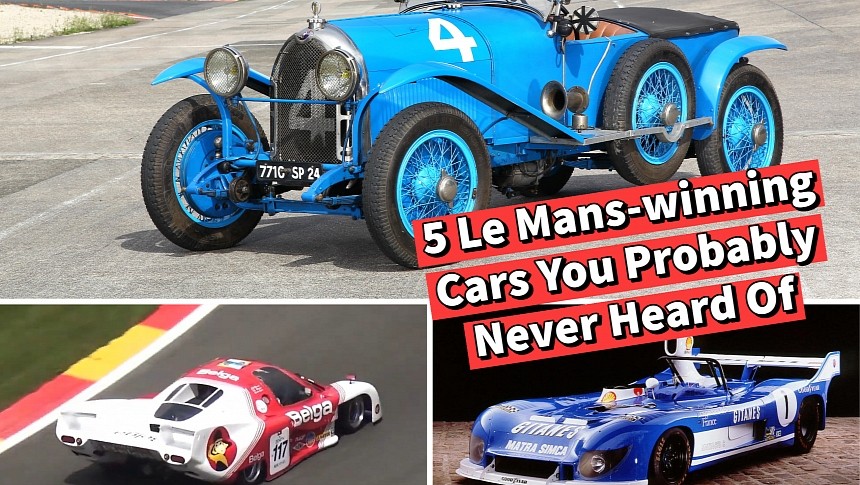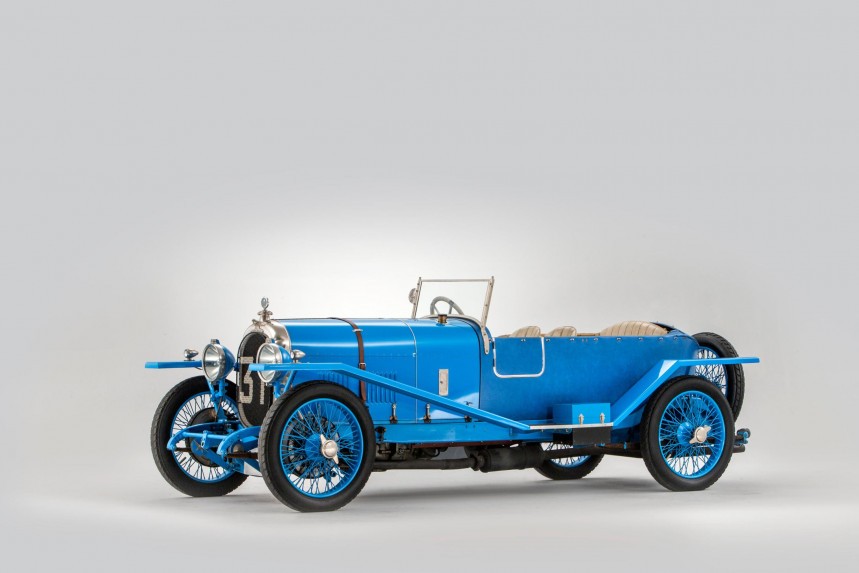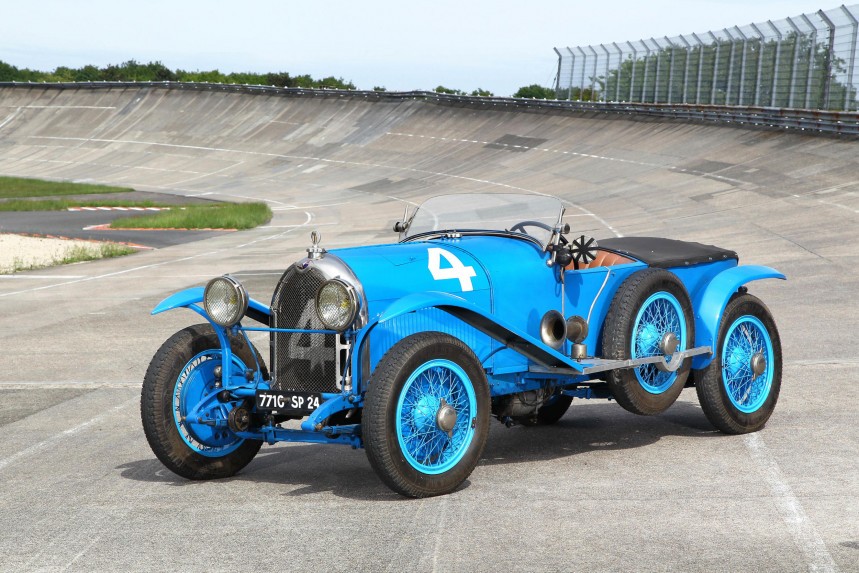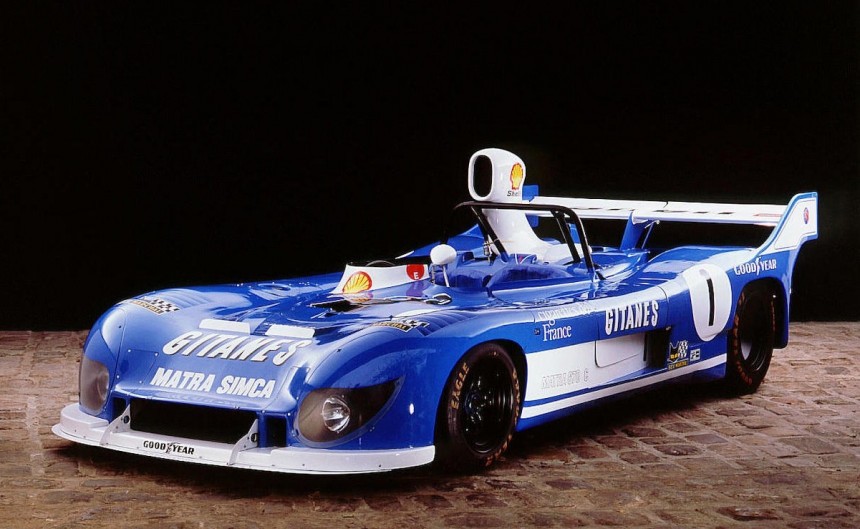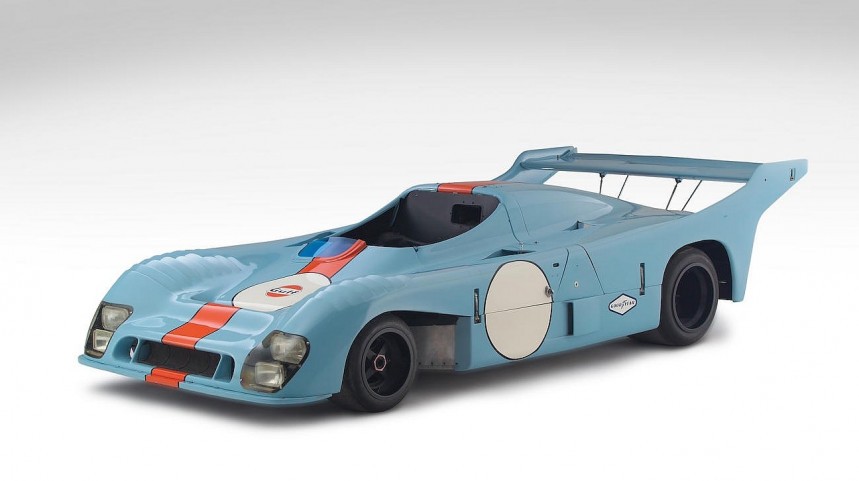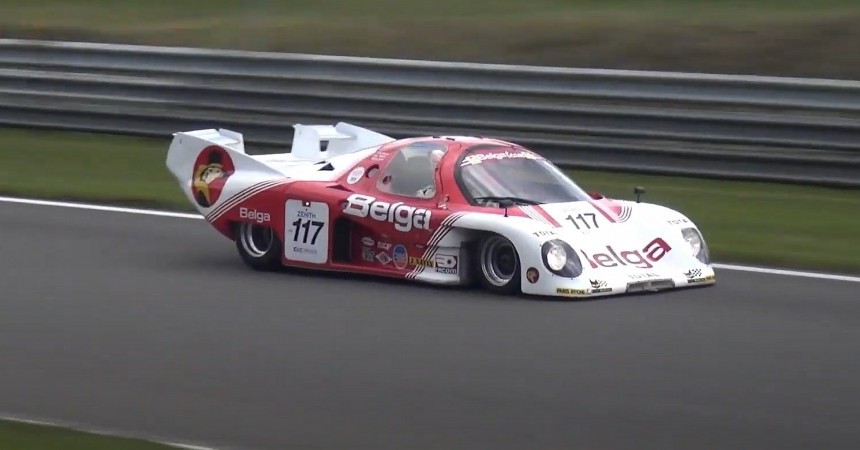First run in 1923, the 24 Hours of Le Mans is turning 100 this year. The world's oldest active endurance racing event, Le Mans was contested by all major automakers throughout history, with Porsche, Audi, and Ferrari leading the way in terms of overall wins.
Jaguar, Bentley, and Toyota are also among the carmakers that scored at least five victories, while Alfa Romeo and Ford also dominated the event at some point. Mainstream brands winning the grueling event include Bugatti, Aston Martin, BMW, McLaren, Mercedes-Benz, and Mazda.
But Le Mans was also contested by lesser-known companies and even privateers. And some managed to win despite having small budgets or next to no support from big sponsors. Others are simply overshadowed by the mainstream carmakers that dominated the endurance racing scene. Here are five Le Mans-winning cars that you probably never heard of.
I'm kicking off the list with the car winning the first 24 Hours of Le Mans race in 1923. And an automaker that's rather anonymous despite being active for more than 50 years. Established in 1898, Chenard-Walcker rose to prominence in the 1910s.
The company became the fourth largest carmaker in France in the 1920s when it also entered a collaboration with Delahaye and Rosengart. Chenard-Walcker tackled the first edition of the 24 Hours of Le Mans with the Type U3 15CV Sport. Powered by a 3.0-liter inline-four engine, the Type U3 scored a 1-2 win, while a third car finished seventh. Driven by Andre Lagache and Rene Leonard, the winning car completed 128 laps.
The French firm's success dwindled in the 1930s. The company went bankrupt in 1936 and was taken over by Chausson. Chenard-Walcker disappeared in the late 1940s when Peugeot purchased Chausson. The iconic D3 and D4 vans produced by the latter until 1965 were actually designed by Chenard-Walcker in 1947.
My second entry also hails from France. It's also one of the first Le Mans winners, and the company that built it is no longer around. I'm talking about Lorraine-Dietrich, which was born when a locomotive manufacturer branched into automobile production in 1896. The company disappeared in 1935 due to financial issues, leaving a few iconic and innovative vehicles behind.
Lorraine-Dietrich won the 24 Hours of Le Mans in 1925 with the B3-6 Sport. A typical roadster on the outside, the B3-6 rolled off the assembly line with a 3.4-liter straight-six rated at about 100 horsepower. While not quite as popular as the Bentleys and Bugattis of the era, its reliability turned into the car to beat at Circuit de la Sarthe.
The car was first raced at Le Mans in 1923, finishing eighth. The company returned in 1924 and scored second and third-place finishes, losing to Bentley. But the third time was the charm, and a B3-6 driven by Gerard de Courcelles and Andre Rossignol won the 1925 edition by completing 129 laps. The French outfit returned to win again with an updated version in 1926, this time around setting a new distance record at 148 laps.
With two wins in the bag, Lorraine-Dietrich did not return at Le Mans in 1927, and the endurance race became a Bentley affair until 1930.
Matra is not quite as unknown as Chenard-Walcker and Lorraine-Dietrich, but many forget that the French brand ran a successful racing program in the 1960s and 1970s. Equipe Matra Sports first joined Formula 3 and F2 and then joined Formula 1 in 1967. The outfit won the World Championship in 1969.
Matra's venture at Le Mans began in 1966 when the Ford GT40 began its four-year dominance. After three unsuccessful campaigns ended with retirements, Matra scored a fourth-place finish in 1969. The French had to retire again in 1970 and 1971 but managed to take the overall win in 1972 with the MS670.
Developed under Simca ownership, the open-top racer hit the track win an in-house-built 3.0-liter V12 of the naturally aspirated variety. The car appeared at Le Mans only that year, but Matra ran an updated version during the 1973 season. The second success at Circuit de la Sarthe brought the team a win in the world endurance championship.
Matra prepared yet another upgrade for 1974, a season that saw the French outfit win nine out of ten races, including the 24 Hours of Le Mans. Matra-Simca retired from endurance racing after that, but it's one of only a few automakers that scored three back-to-back Le Mans wins.
With Matra out of the way, the Mirage GR8 stepped in to win the 1975 race. Also an open-top racer but fitted with a Cosworth-prepped Ford V8 engine, the GR8 completed 337 laps and scored a narrow success in front of a Ligier JS2. Jacky Ickx and Derek Bell handled the driving duties of the winning No. 11 car.
Run under the Gulf Research Racing banner, the GR8 was built and designed by John Wyer, who won the 24 Hours of Le Mans with Aston Martin and Ford before creating the Mirage. An updated version came close to winning again in 1976 and 1977, but the M8 wasn't quick enough for the Porsche 936.
And we're back in France for the fifth and final car on my list. One of only three 1980s Le Mans winners that's not a Porsche, the Rondeau M379B was designed by Jean Rondeau, who was actually born in the town of Le Mans. Jean began building Group 6 race cars in 1975 and first tackled the endurance event with the Inaltera GTP in 1976. The vehicle finished eighth and first in class that year and returned for another GTP-class win (and fourth overall) in 1977.
Rondeau then designed the M378 for the 1978 season and once again won the GTP class with a Cosworth DFV V8 engine providing the oomph. In 1979, the Rondeau M379 was driven to fifth overall place by Jean Ragnotti and Bernard Darniche. Rondeau himself drove a second car to tenth position.
Despite many teams dropping the DFV engine as uncompetitive in terms of power and reliability, Rondeau scored a surprise win at Le Mans in 1980, finishing two laps ahead of a Porsche 908 run by Martini Racing. A second M378B took the flag third. Jean Rondeau shared driving duties in the winning car, making him the only driver to win Le Mans in a car bearing his own name. The French outfit returned to Circuit de la Sarthe until 1983 but failed to finish any races, and the team was disbanded.
But Le Mans was also contested by lesser-known companies and even privateers. And some managed to win despite having small budgets or next to no support from big sponsors. Others are simply overshadowed by the mainstream carmakers that dominated the endurance racing scene. Here are five Le Mans-winning cars that you probably never heard of.
Chenard-Walcker Type U3 15CV Sport
The company became the fourth largest carmaker in France in the 1920s when it also entered a collaboration with Delahaye and Rosengart. Chenard-Walcker tackled the first edition of the 24 Hours of Le Mans with the Type U3 15CV Sport. Powered by a 3.0-liter inline-four engine, the Type U3 scored a 1-2 win, while a third car finished seventh. Driven by Andre Lagache and Rene Leonard, the winning car completed 128 laps.
The French firm's success dwindled in the 1930s. The company went bankrupt in 1936 and was taken over by Chausson. Chenard-Walcker disappeared in the late 1940s when Peugeot purchased Chausson. The iconic D3 and D4 vans produced by the latter until 1965 were actually designed by Chenard-Walcker in 1947.
Lorraine-Dietrich B3-6 Sport
Lorraine-Dietrich won the 24 Hours of Le Mans in 1925 with the B3-6 Sport. A typical roadster on the outside, the B3-6 rolled off the assembly line with a 3.4-liter straight-six rated at about 100 horsepower. While not quite as popular as the Bentleys and Bugattis of the era, its reliability turned into the car to beat at Circuit de la Sarthe.
The car was first raced at Le Mans in 1923, finishing eighth. The company returned in 1924 and scored second and third-place finishes, losing to Bentley. But the third time was the charm, and a B3-6 driven by Gerard de Courcelles and Andre Rossignol won the 1925 edition by completing 129 laps. The French outfit returned to win again with an updated version in 1926, this time around setting a new distance record at 148 laps.
With two wins in the bag, Lorraine-Dietrich did not return at Le Mans in 1927, and the endurance race became a Bentley affair until 1930.
Matra-Simca MS670
Matra's venture at Le Mans began in 1966 when the Ford GT40 began its four-year dominance. After three unsuccessful campaigns ended with retirements, Matra scored a fourth-place finish in 1969. The French had to retire again in 1970 and 1971 but managed to take the overall win in 1972 with the MS670.
Developed under Simca ownership, the open-top racer hit the track win an in-house-built 3.0-liter V12 of the naturally aspirated variety. The car appeared at Le Mans only that year, but Matra ran an updated version during the 1973 season. The second success at Circuit de la Sarthe brought the team a win in the world endurance championship.
Matra prepared yet another upgrade for 1974, a season that saw the French outfit win nine out of ten races, including the 24 Hours of Le Mans. Matra-Simca retired from endurance racing after that, but it's one of only a few automakers that scored three back-to-back Le Mans wins.
Mirage GR8
Run under the Gulf Research Racing banner, the GR8 was built and designed by John Wyer, who won the 24 Hours of Le Mans with Aston Martin and Ford before creating the Mirage. An updated version came close to winning again in 1976 and 1977, but the M8 wasn't quick enough for the Porsche 936.
Rondeau M379B
Rondeau then designed the M378 for the 1978 season and once again won the GTP class with a Cosworth DFV V8 engine providing the oomph. In 1979, the Rondeau M379 was driven to fifth overall place by Jean Ragnotti and Bernard Darniche. Rondeau himself drove a second car to tenth position.
Despite many teams dropping the DFV engine as uncompetitive in terms of power and reliability, Rondeau scored a surprise win at Le Mans in 1980, finishing two laps ahead of a Porsche 908 run by Martini Racing. A second M378B took the flag third. Jean Rondeau shared driving duties in the winning car, making him the only driver to win Le Mans in a car bearing his own name. The French outfit returned to Circuit de la Sarthe until 1983 but failed to finish any races, and the team was disbanded.
